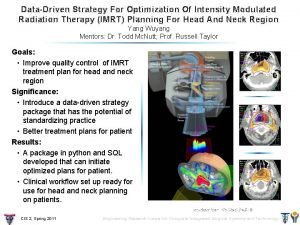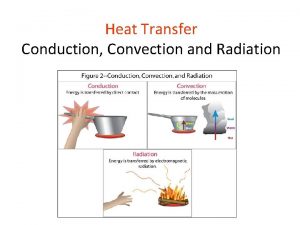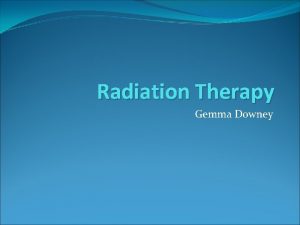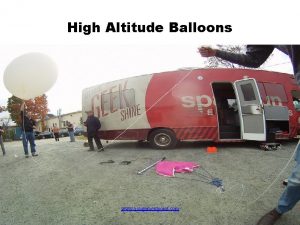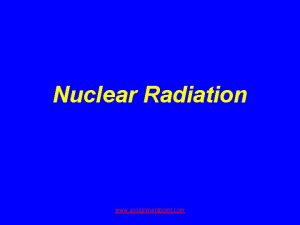Radiation Therapy www assignmentpoint com Radiation Therapy Radiation
































- Slides: 32

Radiation Therapy www. assignmentpoint. com

Radiation Therapy Radiation therapy uses ionising radiation to treat cancer i. e. to destroy cancerous cells. There are two techniques in radiation therapy that are used to treat cancer using ionising radiation: • Radiotherapy • Brachytherapy www. assignmentpoint. com

Radiotherapy Treatment Planning Every treatment using radiotherapy has to be rigorously planned. The planning process consists of three phases: • Planning • Simulation • Treatment www. assignmentpoint. com

Radiotherapy Treatment Planning The cancerous tumour has to be located so that its size and position can be analysed. This information can be obtained from: • X-rays • CT scans • MRI scans • Ultrasound images www. assignmentpoint. com

Radiotherapy Treatment Planning Simulation Once the amount of radiation to be given has been accurately calculated, the patient then goes to the simulator to determine what settings are to be selected for the actual treatment using a linear accelerator. The settings are determined by taking a series of x-rays to make sure that the tumour is in the correct position ready to receive the ionising radiation. www. assignmentpoint. com

Radiotherapy Treatment Planning Treatment Cancerous tumours can be treated using radiotherapy as follows: • Irradiation using high energy gamma rays. • Irradiation using high energy x-rays. www. assignmentpoint. com

Radiotherapy Treatment Irradiation Using High Energy Gamma Rays • Gamma rays are emitted from a cobalt-60 source – a radioactive form of cobalt. • The cobalt source is kept within a thick, heavy metal container. • This container has a slit in it to allow a narrow beam of gamma rays to emerge. www. assignmentpoint. com

Radiotherapy Treatment Irradiation Using High Energy X-rays • The x-rays are generated by a linear accelerator (linac). • The linac fires high energy electrons at a metal target and when the electrons strike the target, x-rays are produced. • The x-rays produced are shaped into a narrow beam by movable metal shutters. www. assignmentpoint. com

Treatment of Cancer Radiotherapy • The apparatus is arranged so that it can rotate around the couch on which the patient lies. • This allows the patient to receive radiation from different directions. • The diseased tissue receives radiation all of the time but the healthy tissue receives the minimum amount of radiation possible. • Treatments are given as a series of small doses because cancerous cells are killed more easily when they are dividing, and not all cells divide at the same time – this reduces some of the side effects which come with radiotherapy. www. assignmentpoint. com

Radiation Therapy Brachytherapy • This involves placing implants in the form of seeds, wires or pellets directly into the tumour. • Such implants may be temporary or permenant depending on the implant and the tumour itself. • The benefit of such a method is that the tumour receives nearly all of the dose whilst healthy tissue hardly receives any. www. assignmentpoint. com

Radiation Therapy Brachytherapy is used to treat the following cancers: • • Uterus Cervix Prostate Intraocular Skin Thyroid Bone www. assignmentpoint. com

Tracers There are many uses of ionising radiation based on the fact that it is easy to detect. In such applications, the radioactive material is used in the form of a tracer. In nuclear medicine, a tracer is a radioactive substance which is taken into the body either, as an injection, or as a drink. Such a substance is normally a gamma emitter which is detected and monitored. This gives an indication of any problems that may be present in body organs or tissues by how much, or how little, of the substance has been absorbed. www. assignmentpoint. com

Nuclear Medicine Tracers It is important to be able to study internal organs, or tissues, without the need for surgery. In such cases, radioactive tracers can be injected into the body so such studies can take place. The path of these tracers can be detected using a gamma camera because of their radioactivity. Such tracers consist of two parts: • A drug which is chosen for the particular organ that is being studied. • A radioactive substance which is a gamma emitter. www. assignmentpoint. com

Tracers Used in Nuclear Medicine Pharmaceutical Source Activity (MBq) Medical Use Pertechnetate 99 m. Tc 550 - 1200 Brain Imaging Pyrophosphate 99 m. Tc 400 - 600 Acute Cardiac Infarct Imaging Diethylene Triamine Pentaacetic Acid (DTPA) 99 m. Tc 20 - 40 Lung Ventilation Imaging Benzoylmercaptoacetyltri glycerine (MAG 3) 99 m. Tc 50 - 400 Renogram Imaging Methylene Diphosphonate (MDP) 99 m. Tc 350 - 750 Bone Scans www. assignmentpoint. com

Factors Which Affect the Choice of Tracer Such tracers are chosen so that: • They will concentrate in the organ, or tissue, which is to be examined. • They will lose their radioactivity (short t). • They emit gamma rays which will be detected outside the body. www. assignmentpoint. com

Factors Which Affect the Choice of Tracer • Gamma rays are chosen since alpha and beta particles would be absorbed by tissues and not be detected outside the body. • Technitium-99 m is most widely used because it has a half-life of 6 hours. www. assignmentpoint. com

Why is a half-life of 6 hours important? A half-life of 6 hours is important because: • A shorter half-life would not allow sufficient measurements or images to be obtained. • A longer half-life would increase the amount of radiation the body organs or tissues receive. www. assignmentpoint. com

The Gamma Camera The tracer is injected into the patient. The radiation emitted from the patient is detected using a gamma camera. A typical gamma camera is 40 cm in diameter – large enough to examine body tissues or specific organs. The gamma rays are given off in all directions but only the ones which travel towards the gamma camera will be detected. www. assignmentpoint. com

The Gamma Camera A gamma camera consists of three main parts: • A collimator. • A detector. • Electronic systems. electronic systems detector collimator www. assignmentpoint. com

The Gamma Camera The Collimator • The collimator is usually made of lead and it contains thousands of tiny holes. • Only gamma rays which travel through the holes in the collimator will be detected. www. assignmentpoint. com

The Gamma Camera The Detector • The detector is a scintillation crystal and is usually made of Sodium Iodide with traces of Thallium added. • The detector is a scintillation crystal and it converts the gamma rays that reach it into light energy. www. assignmentpoint. com

The Gamma Camera The Electronic Systems • The electronic systems detect the light energy received from the detector and converts it into electrical signals. www. assignmentpoint. com

Diagnosis Static Imaging • There is a time delay between injecting the tracer and the build-up of radiation in the organ. • Static studies are performed on the brain, bone or lungs scans. www. assignmentpoint. com

Diagnosis Dynamic Imaging • The amount of radioactive build-up is measured over time. • Dynamic studies are performed on the kidneys and heart. www. assignmentpoint. com

Dynamic Imaging The Renograms are dynamic images of the kidneys and they are performed for the following reasons: • • • To assess individual kidney and/or bladder function. To detect urinary tract infections. To detect and assess obstructed kidney(s). To detect and assess vesico-ureteric reflux. To assess kidney transplant(s). www. assignmentpoint. com

Performing the Renogram • The tracer is injected into the patient. • The radioactive material is removed from the bloodstream by the kidneys. • Within a few minutes of the injection, the radiation is concentrated in the kidneys. • After 10 – 15 minutes, almost all of the radiation should be in the bladder. • The gamma camera takes readings every few seconds for 20 minutes. www. assignmentpoint. com

www. assignmentpoint. com

Diagnosis The Renogram • The computer adds up the radioactivity in each kidney and the bladder. • This can be shown as a graph of activity versus time – a timeactivity curve. www. assignmentpoint. com

A Normal Renogram www. assignmentpoint. com

An Abnormal Renogram www. assignmentpoint. com

Sterilisation • Radiation not only kills cells, it can also kill germs or bacteria. • Nowadays, medical instruments (e. g. syringes) are prepacked and then irradiation using an intense gamma ray source. • This kills any germs or bacteria but does not damage the syringe, nor make it radioactive. www. assignmentpoint. com

Summary • Ionising radiation is used in radiotherapy to treat cancer and to sterilise medical equipment because it destroys cells. • Radioactive tracers are used in nuclear medicine because the ionising radiation it emits is easy to detect. www. assignmentpoint. com
 Bài thơ mẹ đi làm từ sáng sớm
Bài thơ mẹ đi làm từ sáng sớm Cơm
Cơm Www.assignmentpoint.com
Www.assignmentpoint.com Objectives of computer hardware
Objectives of computer hardware Assignment point.com
Assignment point.com Mail @ assignmentpoint.com
Mail @ assignmentpoint.com Slidetodoc.com
Slidetodoc.com Www.assignment
Www.assignment Project management functions
Project management functions Importance of forestry
Importance of forestry Mail @ assignmentpoint.com
Mail @ assignmentpoint.com Www.assignment
Www.assignment Assignmentpoint.com
Assignmentpoint.com Assignmentpoint
Assignmentpoint Basiospore
Basiospore Sequence diagram colon
Sequence diagram colon Www.assignmentpoint.com
Www.assignmentpoint.com Www.assignmentpoint.com
Www.assignmentpoint.com Assignmentpoint.com
Assignmentpoint.com Www.assignmentpoint.com
Www.assignmentpoint.com Tetrafluroethene
Tetrafluroethene Www.assignmentpoint.com
Www.assignmentpoint.com Assignmentpoint.com bangladesh
Assignmentpoint.com bangladesh Gvsu radiation therapy
Gvsu radiation therapy Nhti radiation therapy
Nhti radiation therapy Cancer treatment
Cancer treatment Intensity modulated radiation therapy
Intensity modulated radiation therapy Both psychoanalysis and humanistic therapy stress
Both psychoanalysis and humanistic therapy stress Bioness integrated therapy system occupational therapy
Bioness integrated therapy system occupational therapy Psychoanalytic therapy is to as humanistic therapy is to
Psychoanalytic therapy is to as humanistic therapy is to Solar radiation has a part in the water cycle by
Solar radiation has a part in the water cycle by Identify transfer of heat using pictures
Identify transfer of heat using pictures Radiation
Radiation


























